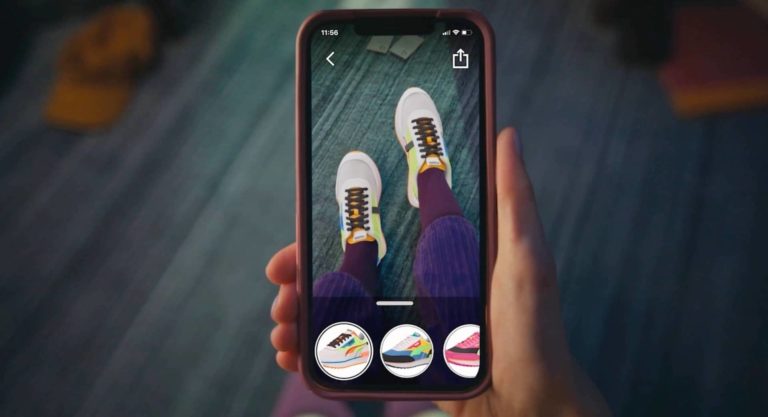
Like many analyst firms, market sizing is one of the ongoing practices of AR Insider’s research arm ARtillery Intelligence. A few times per year, it goes into isolation and buries itself deep in financial modeling. One such exercise zeroes in on mobile AR revenues.
This is one of the main subdivisions of spatial computing – others including headworn AR and VR. They’re all related and share technological underpinnings, but are driven by separate market forces such as their respective hardware bases (see methodology and inclusions).
So what did the mobile AR forecast uncover? At a high level, global mobile AR revenue is projected to grow from $9.94 billion in 2022 to $18.9 billion in 2027, a 15.4 percent CAGR. This sum consists of mobile AR consumer and enterprise spending and their revenue subsegments.
Drilling down, our latest Behind the Numbers installment looks at the forecast’s outlook for spending on mobile AR shopping enablement. How much do brands spend on technologies to AR-enable their eCommerce shopping flows, including product try-ons and other 3D visualizations?
Intent-Driven
Diving into the numbers, spending on mobile AR shopping enablement is projected to grow from $2.1 billion in 2022 to $5.8 billion by 2027. This is one of the fastest-growing enterprise/brand spending areas tracked in this forecast, due to the traction seen so far in AR shopping.
In that light, these spending levels are related to an area we explored in a recent part of this series: mobile AR shopping and commerce. There, we looked at consumer spending on physical goods that are influenced by AR visualization, such as virtual product try-ons.
The commerce enablement spending we’re looking at today is what enables that immersive shopping functionality. It includes spending on software that helps brands create, optimize, and manage 3D models, as well as other interactive elements required for product visualization.
Naming names, some of the tools in this emerging and opportune category include QReal (3D model creation), VNTANA (3D model optimization and management), and Dopple (eCommerce integrations). But it doesn’t include AR ad placement (tracked separately)
In terms of breakdowns and spending shares, the majority of XR shopping enablement currently happens through visual search, such as Google Lens which sees 10 billion searches per month. Its advantages include the same intent-driven use case that makes web search so lucrative.
That’s followed by social lenses – most notably Snapchat’s AR efforts. Lenses have gained ample traction among consumers for their whimsy and virality. But they’ve also leaned toward utility as they evolve. And the biggest place that’s happening is with virtual product try-ons.
By the Carrot or the Stick
Stepping back, this is an opportune mobile AR subsector due to its growth potential. Consumer engagement with immersive shopping currently shows ample momentum, which will be further propelled as the camera-native Gen-Z continues to gain spending power.
As these factors advance, AR shopping will increasingly become table stakes for brands. Fortunately for them, the barriers are lowered by the likes of Apple’s Object Capture and other tools that enable 3D model generation using an iPhone (sans complex photogrammetry).
And there’s plenty of headroom: As we examined recently, AR-assisted shopping only takes place within about .4 percent (less than half a percent) of overall global consumer spending. This makes it opportune in that the market is far from saturated. We’re on the ground floor.
One way the adoption sequence could ratchet up is through consumer conditioning. First, early adopter brands start to whet consumers’ appetites for things like dimensional product try-ons in mobile AR. Gradually, that will condition user habits, which then evolve into expectations.
Those consumer expectations will then pressure brands that haven’t yet adopted AR marketing to finally come on board. They won’t have much choice because it will be table stakes at that point. Put another way, brands will adopt AR eventually, whether by the carrot or the stick.
To be fair, this sequence could take a while. Though it offers tangible utility, it’s hard to change habits en masse. That’s what we’re currently seeing in the slow adoption cycle for AR shopping. Innovators with the patience to stick with it could be rewarded with an early-mover advantage.

